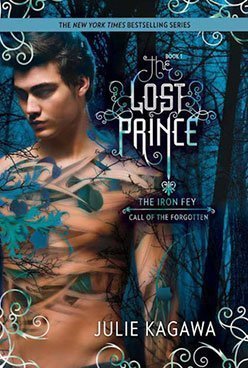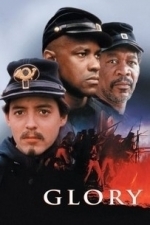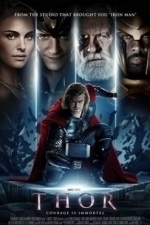
R Instructor
Reference and Education
App
** Within the top 35 best selling reference application in more than 25 countries, including:...

Coin Alert & Filter: Bitcoin Price Notification
Finance and Business
App
Real-time cryptocurrency alert, price reminder, filter, and news compilation for more than 1000...

GOAL Football Manager
Games and Sports
App
"GOAL Manager" is the only manager game that is completely free and does not have any in-app...
Sophia (Bookwyrming Thoughts) (530 KP) rated The Lost Prince (The Iron Fey: Call of the Forgotten, #1) in Books
Jan 23, 2020
<ul>
<li>The Iron King</li>
<li>Winter's Passage*</li>
<li>The Iron Daughter</li>
<li>The Iron Queen</li>
<li>Summer's Crossing*</li>
<li>The Iron Prophecy*</li>
</ul>
*Also in The Iron Legends
For those who have followed Meghan's journey from the beginning, remember that cute little boy who was kidnapped and replaced by a changeling? He was later rescued by Meghan. That little boy was Ethan Chase, and 12 years later, after trying to avoid the fey at all costs, the fey comes for him again. All he wants is a normal life learning Kali and be an ordinary guy, even if he can see the Fey.
<div class="separator" style="clear: both; text-align: center;"><a style="margin-left: 1em; margin-right: 1em;" href="http://1.bp.blogspot.com/-AMMqT9VfbJ0/UI81aqQJBbI/AAAAAAAAAkw/0SoygN2dErk/s1600/Snoopy_happy_dance.jpg"><img src="http://bookwyrmingthoughts.bookblog.io/wp-content/uploads/sites/317/2012/11/Snoopy_happy_dance.jpg"; border="0" /></a></div>
I was doing this all day.
*Happy Dance*
Nope. The entrance to the amazing Faery World woven in the awesome works of Julie Kagawa was not randomly picked 2 years ago when I first spot the book at the library. I just made a beeline for it. Maybe not literally a beeline it was actually in Book Battle Club, which I couldn't join (aww)... but the cover and title caught my attention in a nanosecond. And thus, I enter the NeverNever in the likes of daydreaming. (I emphasize Imagination here) ^_^
So, reading the entire series from left to right and hopefully later it'll be right to left... when I saw The Lost Prince in stock at my local bookstore (make that e-book store), I went into immediate squeal-a-thon mode (silently so no one sees me as a crazy girl) and was doing a happy dance the entire time I was reading it. Especially when Puck came in. Puck just somehow always make everything absolutely hilarious with his pranks. The others do too... Puck just has that special Prankster badge hovering around him 24/7. :)
Then there's good old Grimalkin. "I am a cat." Yep, the "obnoxious furball" is back to guide Ethan Chase and Mackenzie (Kenzie) St. James through the NeverNever. I love Grimalkin because he reminds me of Alice in Wonderland's Cheshire Cat, the way he disappears and then appears from place to place. Good thing he doesn't speak in riddles... or does he?
All in all, the book was a page turner. The new cast of characters are just as interesting as the old ones, even if I dislike Ethan in a way. I did grew to like him later though. :) Although I wish the book didn't really end yet, but like all books, even the good ones, eventually come to a stopping point :'(. The good news is that the series isn't over (yay!) so I'm pretty sure I can come and visit my fellow fey friends whenever the next book comes out. But while I'm waiting, I'll go traveling around other worlds. Maybe I'll even re-read the series if I miss the NeverNever too much... or indulge myself in other works of magical realms.
<a href="https://bookwyrmingthoughts.com/review-the-lost-prince-by-julie-kagawa/"; target="_blank">This review was originally posted on Bookwyrming Thoughts</a>
BankofMarquis (1832 KP) rated Glory (1989) in Movies
Apr 14, 2020
Directed by Richard Zwick (LEGENDS OF THE FALL) Glory tells the true story of the 54th Massachusetts Volunteer Infantry of the Union Army in the Civil War - the first all black infantry - and stars Mathew Broderick (FERRIS BUELLER'S DAY OFF), Cary Elwes (THE PRINCESS BRIDE), Morgan Freeman (on his way to becoming well known), Andre Braugher (in one of his first screen appearances) and Denzel Washington (who won an Oscar for his work).
Zwick does a wonderful job putting a unique spin on a standard story - ragtag group of soldiers band together, they go through bootcamp together and shift from a disparate group of individuals to a solid team - and then prove their worth in battle. This could have easily been a "paint by numbers" film but Zwick makes it something more, putting the emphasis on the soldiers and the obstacles they need to overcome and downplaying the danger and the violence. Don't get me wrong - the action sequences are intense and well made, they just aren't the point of the film.
The point of the film are the men who are involved - and the 5 leads are tremendous. Morgan Freeman shows the grace and leadership and authority that he would bring to many, many pictures. Elwes shows that he can command a screen, if given a chance and Denzel sparkles in his scenes. This picture shows a true movie star being born. But the real surprises for me on this viewing is the work of Matthew Broderick, playing a very different character than the light comedy performances we had seen from him in films like FERRIS BUELLER and on the stage that we would come to know him as in such musicals as THE PRODUCERS. This film shows that he has some wonderful acting chops and is just at home with a dramatic role as he is with a light comedic role.
But...the actor that really stood out from the others in this showing is the great Andre Braugher in his first Major Motion Picture appearance. He would go on to shine brightly in such roles as Detective Pembleton in HOMICIDE: LIFE ON THE STREETS and currently is starring as Captain Holt in BROOKLYN 99, but in Glory he was an unknown commodity and his portrayal of free, educated black man Thomas Searles - a childhood friend of both the Broderick and Elwes characters - who must adjust to being one of "the men" with this collection of uneducated former slaves and live in a tiered relationship with 2 men that are his peers and friends is heartbreaking to watch. Even though I was thrilled with Washington's Oscar (he does have the "Oscar scene" in this film), I thought Braugher's performance was just as good - maybe even better.
All of this leads the audience to a finale that is intense - and intensely personal - for you are invested in these men as they face insurmountable odds and most certain death.
I've been re-watching quite a few movies lately, and GLORY is one that hit me harder - and is better - than I remembered. Well worth checking out.
Letter Grade: A
9 stars (out of 10) and you can take that to the Bank(ofMarquis)
Gareth von Kallenbach (980 KP) rated Thor (2011) in Movies
Aug 7, 2019
Instead of his planned coronation, Thor finds himself cast out of Asgard and forced to live as a mortal on Earth. Truly a fish out of water, the brash and arrogant Thor is befriended by scientist Jane Watson (Natalie Portman), the first person Thor encounters upon his arrival. Unsure of his true identity, Jane and her colleagues are drawn to the mysterious stranger despite his tales which, to the humans, are the stuff of ancient Norse legends.
While initially dismissed as a drifter, Thor soon gains the respect of Jane and her colleagues when he stands up to a mysterious government organization that has seized her work. Thor soon finds himself battling enemies on multiple fronts on both his present and former home where he must battle to regain his lost honor and status and prove himself the rightful leader of his people. What follows is a highly entertaining mix of action, comedy, and a touch of romance that sets the film apart from many of its peers.
Director Kenneth Branagh fleshes out the characters from their two-dimensional origins and paces the film well never allowing the elaborate effects or action sequences of the film to overshadow the characters or the story. J. Michael Straczynski used many of the lessons he learned as the creator of the Babylon 5 and in his recent work with Marvel comics to provide a character-driven story that is true to the source material while providing interweaving storylines and ever-changing characters.
The supporting cast was strong, especially Tom Hiddleston as Thor’s younger sibling Loki. The visuals of the film match the action perfectly as Asgard and some of the other realms are truly breathtaking. The only issue I had with the film was that, sadly, Paramount felt the need to use a post filming 3-D conversion on the film which in my opinion offered very little to the finished product. Had the film been shot with 3-D cameras it truly would’ve taken it to the next level but as it was actually done, the 3D conversion offers little to the visual experience.
Hemsworth commands the screen in every scene in which he appears. He is a charismatic presence that deftly walks the line between brash warrior and leader seeking redemption, who never lets his performance become cartoony or forced. I absolutely loved every part the film from beginning to end and in my opinion Thor has set the bar very high for the next series of comic book themed movies to aspire to and is not to be missed.
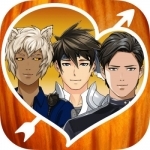
Lovestruck Choose Your Romance
Games, Entertainment and Stickers
App
Lovestruck is your portal to the greatest interactive romance stories! Your happily ever after may...

Sobotta Anatomy Atlas Free
Medical and Education
App
Download the Sobotta Anatomy App free of charge and test its full functionality with 40 unrestricted...
Whisperin' Bill Anderson: An Unprecedented Life in Country Music
Bill Anderson and Peter Cooper
Book
Whisperin' Bill: An Unprecedented Life in Country Music presents a revealing portrait of Bill...
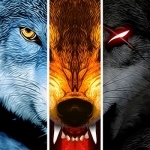
Wolf Online
Games
App
[Game Overview] A cruel and gruesome war among three wolf species begins. A real network survival...
